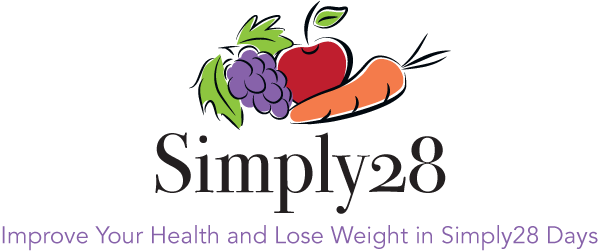Whether you’re soaking up the sun on a warm afternoon or browsing the supplement aisle at your local health store, chances are you’ve heard about the importance of vitamin D. But what exactly is it, why do we need it, and how do we know if we’re getting enough?
Vitamin D is often called the “sunshine vitamin” for good reason — our bodies can actually produce it when our skin is exposed to sunlight. But interestingly, it’s more than just a vitamin. Vitamin D acts as both a vitamin and a hormone, playing a crucial role in many physiological processes.
There are two main forms:
-
- Vitamin D2 (ergocalciferol) – found in some plant sources and fortified foods.
- Vitamin D3 (cholecalciferol) – the natural form synthesized by the body from sunlight and found in animal-based foods.
While both D2 and D3 can be used to raise vitamin D levels in the blood, D3 is significantly more effective because it is bioactive — meaning the body can use it without needing to convert it. On the other hand, D2 must first be processed by the liver and kidneys to become active. This conversion can be problematic for individuals with liver or kidney disease, putting them at a higher risk for osteoporosis, immune dysfunction, and other chronic conditions tied to low vitamin D.
What Are the Benefits of Vitamin D?
Vitamin D is essential to our health. It’s not just about strong bones (though that’s a big one!). Here’s how it supports your body:
-
- Bone and Dental Health: Vitamin D helps your body absorb calcium and phosphorus, two minerals vital for strong teeth and bones. In children, it’s essential for proper skeletal development and preventing conditions like rickets.
- Muscle and Heart Function: It helps prevent muscle weakness and supports a regular heartbeat — which makes it important for physical performance and cardiovascular health.
- Immune Support: Vitamin D boosts the immune system, helping your body fight off infections. Research also suggests it may reduce the risk of respiratory infections and autoimmune conditions.
- Cancer Prevention: Some studies show that maintaining optimal vitamin D levels may help reduce the risk of certain cancers, particularly colon, breast, and prostate cancer.
- Thyroid and Blood Clotting: It plays a supportive role in thyroid hormone production and helps regulate normal blood clotting mechanisms.
In short, vitamin D does a lot more than you might think. It’s foundational to nearly every system in the body.
How Can I Get Enough Vitamin D?
Here’s the good news — your body can produce vitamin D naturally. The not-so-good news? Many people still aren’t getting enough. Here’s how to get more of it, safely and effectively:
- Sunlight Exposure
When UVB rays from the sun hit your skin, they convert a cholesterol compound into vitamin D3. It’s a beautifully efficient process, but a few things can interfere:
-
- Time of day (midday sun is best)
- Skin color (darker skin requires more sun exposure)
- Age (older adults produce less vitamin D)
- Geographic location (northern latitudes receive less UVB year-round)
How much sun is enough?
About 10 to 30 minutes of midday sun exposure on the face, arms, and legs a few times a week is usually sufficient, but this varies. Be mindful: don’t wear sunscreen while trying to absorb vitamin D, as it blocks UVB rays — but don’t stay out long enough to burn either.
- Animal-Based Foods Rich in D3
These foods naturally contain the bioactive form of vitamin D3:
-
- Fatty fish (salmon, mackerel, sardines)
- Egg yolks
- Beef liver
- Cod liver oil
- Fortified dairy products
Because D3 is bioactive, your body can absorb and use it directly.
- Plant-Based Sources of D2
Plant foods like mushrooms (especially those exposed to UV light) and fortified cereals contain D2. However, remember: D2 is not bioactive, and your body must convert it to D3 — a process that’s not always efficient.
- Lichen – A Vegan-Friendly D3 Option
Lichen is a unique symbiotic organism made up of fungi and algae, and unlike most plants, it can synthesize vitamin D3 under UVB exposure. It’s often used in high-quality vegan supplements as a plant-based D3 alternative.
Who’s at Risk of a Vitamin D Deficiency?
Despite its availability from sunlight and food, vitamin D deficiency is surprisingly common. In fact, it’s estimated that over 40% of U.S. adults may have insufficient levels.
You’re at higher risk if you:
-
- Follow a plant-based diet without consuming fortified foods or supplements
- Struggle to convert D2 to D3 (which can be influenced by genetics, gut health, or chronic disease)
- Spend most of your time indoors
- Have darker skin, which naturally blocks UVB absorption
- Are overweight or obese, as vitamin D is fat-soluble and can get trapped in fat tissue
- Suffer from kidney or liver disease
- Have digestive disorders that affect fat absorption, such as celiac disease or Crohn’s disease
If you fall into one of these categories, talk to your healthcare provider about checking your levels.
How Do I Know If I’m Deficient?
The only way to know for sure is through a blood test called 25-hydroxy vitamin D, or 25(OH)D.
Blood Levels:
-
- Deficient: Less than 20 ng/mL
- Insufficient: 20–30 ng/mL
- Optimal: 40–60 ng/mL
- High: Above 100 ng/mL (may indicate overdose)
Common Signs and Symptoms:
-
- Fatigue or low energy
- Frequent illnesses or infections
- Bone or back pain
- Muscle aches or weakness
- Depression or mood changes
- Hair loss
- Poor wound healing
Symptoms are often subtle or mistaken for other issues, which is why testing is essential.
Is It Possible to Get Too Much Vitamin D?
Yes — but it’s rare, and usually only happens from excessive supplement use, not from sunlight or food.
Blood Level Concern:
-
- Above 100 ng/mL is considered too high
- Toxicity typically occurs at levels over 150 ng/mL
Symptoms of Vitamin D Toxicity:
-
- Nausea and vomiting
- Poor appetite and weight loss
- Weakness
- Confusion or disorientation
- Kidney stones or damage due to elevated calcium levels
Conditions like hypercalcemia (too much calcium in the blood) can result from vitamin D toxicity and may lead to serious health problems.
To stay safe, avoid mega-doses unless prescribed by a doctor. Most adults can meet their needs with 1,000 to 2,000 IU per day, though some may need more based on deficiency levels.
Vitamin D is a powerful nutrient that influences your bones, heart, immune system, mood, and more. While sunlight and food can provide your body with what it needs, many people still fall short — especially during winter months or with limited outdoor exposure.
If you’re concerned about your levels, don’t guess. Ask for a blood test and discuss the results with your provider. Remember, balance is key. Too little and you’re at risk for serious health issues. Too much and you could face toxicity.
Fortunately, with the right mix of smart sun exposure, a nutrient-dense diet, and — if needed — a quality supplement, you can keep your vitamin D levels right where they need to be.




